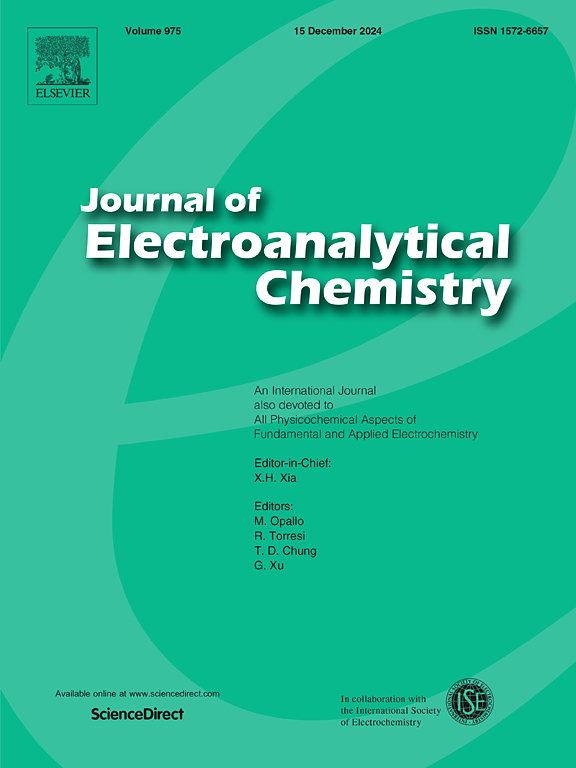Constructing Co9S8/MoS2 heterostructures by one-step pyrolysis deep eutectic solvents enhancing lithium-ion storage
IF 4.1
3区 化学
Q1 CHEMISTRY, ANALYTICAL
引用次数: 0
Abstract
Co9S8 emerges as a promising anode material for lithium-ion batteries (LIBs) due to its high theoretical capacity and eco-friendliness. However, its practical application is hindered by poor electrical conductivity, severe volume expansion, and rapid capacity decay. This study hypothesizes that constructing Co9S8/MoS2 heterostructures within a carbon matrix via a simplified synthesis route can synergistically enhance charge transfer kinetics and structural stability. Herein, a one-step pyrolysis strategy utilizing a deep eutectic solvent (DES) is introduced to fabricate Co9S8/MoS2@C heterostructures, effectively streamlining the complex heterojunction preparation process. The optimized anode delivers exceptional cycling stability, retaining a high reversible capacity of 1022 mA h g−1 after 550 cycles at 0.5 A g−1, alongside improved rate capability. The integrated heterostructure design and carbon confinement mitigate volume changes and facilitate rapid ion/electron transport, as validated by electrochemical and structural analyses. This work demonstrates a scalable synthesis approach for advanced heterostructured anodes, providing insights into overcoming the limitations of conversion-type materials for high-performance LIBs.
一步热解深共晶溶剂构建Co9S8/MoS2异质结构增强锂离子存储
Co9S8因其较高的理论容量和生态友好性而成为锂离子电池(LIBs)极具前景的负极材料。然而,它的实际应用受到导电性差、体积膨胀严重和容量衰减快的阻碍。本研究假设通过简化的合成路线在碳基体内构建Co9S8/MoS2异质结构可以协同提高电荷转移动力学和结构稳定性。本文采用一步热解策略,利用深度共晶溶剂(DES)制备Co9S8/MoS2@C异质结构,有效简化了复杂异质结制备过程。优化后的阳极具有优异的循环稳定性,在0.5 a g - 1下进行550次循环后保持1022 mA h g - 1的高可逆容量,同时提高了速率能力。电化学和结构分析证实,集成异质结构设计和碳约束可以减轻体积变化,促进离子/电子的快速传递。这项工作展示了先进异质结构阳极的可扩展合成方法,为克服高性能lib转换型材料的局限性提供了见解。
本文章由计算机程序翻译,如有差异,请以英文原文为准。
求助全文
约1分钟内获得全文
求助全文
来源期刊
CiteScore
7.80
自引率
6.70%
发文量
912
审稿时长
2.4 months
期刊介绍:
The Journal of Electroanalytical Chemistry is the foremost international journal devoted to the interdisciplinary subject of electrochemistry in all its aspects, theoretical as well as applied.
Electrochemistry is a wide ranging area that is in a state of continuous evolution. Rather than compiling a long list of topics covered by the Journal, the editors would like to draw particular attention to the key issues of novelty, topicality and quality. Papers should present new and interesting electrochemical science in a way that is accessible to the reader. The presentation and discussion should be at a level that is consistent with the international status of the Journal. Reports describing the application of well-established techniques to problems that are essentially technical will not be accepted. Similarly, papers that report observations but fail to provide adequate interpretation will be rejected by the Editors. Papers dealing with technical electrochemistry should be submitted to other specialist journals unless the authors can show that their work provides substantially new insights into electrochemical processes.

 求助内容:
求助内容: 应助结果提醒方式:
应助结果提醒方式:


